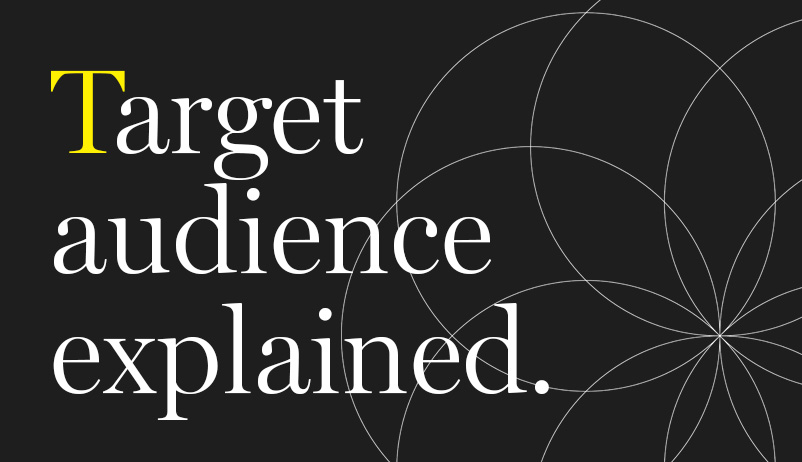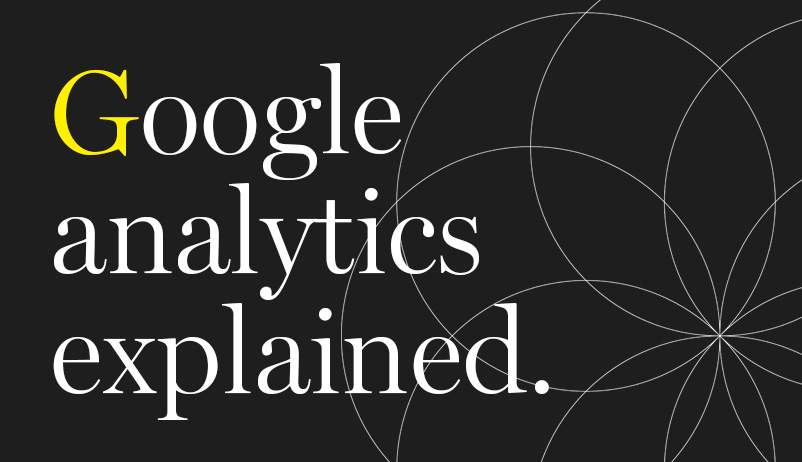

Target Audience
Target Audience
What is a Target Audience?
Lorem ipsum dolor sit amet, consectetur adipiscing elit. Suspendisse varius enim in eros elementum tristique. Duis cursus, mi quis viverra ornare, eros dolor interdum nulla, ut commodo diam libero vitae erat. Aenean faucibus nibh et justo cursus id rutrum lorem imperdiet. Nunc ut sem vitae risus tristique posuere.
What Does a Target Audience Mean in Marketing?
Target audience is a marketing term used to define a group of individuals or organisations that are most likely to be interested in a company's products or services. The target audience is the group of people or organisations that a company aims to reach and persuade to take some sort of action, such as purchasing a product or service, subscribing to a newsletter, or engaging with a social media post. Defining a target audience is essential to any marketing strategy because it helps to create a clear and specific focus for all marketing efforts.
How to Define a Target Audience.
When it comes to defining a target audience, there are several factors to consider. Demographics, such as age, gender, income level, education level, and occupation, are important in determining who is most likely to be interested in a company's products or services. Psychographics, such as interests, hobbies, values, beliefs, and attitudes, are also important in determining a target audience.
For example, if a company sells baby products, their target audience would likely be new parents or parents-to-be. The target audience could be further defined by factors such as age, income level, and geographic location.
Here are some steps to help define your target audience:
- Conduct Market Research: Research your industry, market, and competitors to gain insights into the demographics, behaviours, preferences, and needs of your potential customers.
- Analyse Customer Data: Utilise data from your existing customer base, such as demographics, purchasing behaviour, and feedback, to identify patterns and characteristics of your ideal customers.
- Create Customer Personas: Develop a detailed ideal customer profile (ICP) or personas of your target customers based on the research and data collected. This includes information such as age, gender, location, interests, lifestyle, and motivations.
- Consider Psychographics: Look beyond demographics and consider psychographics, which are the attitudes, values, interests, and behaviours of your target audience. This can provide deeper insights into their motivations and preferences.
- Evaluate Market Segments: Identify and evaluate different market segments within your industry or market based on their size, growth potential, and relevance to your product or service.
- Conduct Surveys or Focus Groups: Conduct surveys, interviews, or focus groups with your existing customers or potential target audience to gather feedback, opinions, and insights about their needs, preferences, and pain points.
- Monitor Online Behaviour: Use analytics tools or social listening to track online behaviour and engagement of your target audience, such as website traffic, social media interactions, and content consumption patterns.
- Refine and Update Regularly: Continuously monitor and update your understanding of your target audience as market dynamics, consumer behaviours, and preferences evolve over time.
By defining your target audience, you can tailor your marketing efforts to better resonate with their needs and preferences, create more effective messaging, and develop strategies to reach and engage them more efficiently.

"Understanding your target audience is crucial in marketing. By focusing on specific demographics and psychographics, businesses can allocate resources more efficiently, optimise messaging so it has higher resonance, gain a competitive edge, and make better-informed decisions."
Paul Mills
Founder, VCMO
Advantages of Target Audience Profiling.
Identifying a target audience has several advantages in the realm of marketing and business strategy:
- Efficient Resource Allocation: By knowing exactly who your target audience is, you can focus your marketing efforts, resources, and budget on the specific group of people who are most likely to be interested in your product or service. This can help you optimise your marketing campaigns, reduce wasteful spending, and achieve better return on investment (ROI).
- Customised Messaging: Understanding your target audience allows you to create tailored messaging that resonates with their needs, preferences, and pain points. This can help you craft compelling marketing messages that are more likely to capture their attention, evoke emotions, and drive engagement.
- Increased Customer Relevance: When you know your target audience well, you can create products, services, and marketing campaigns that are highly relevant to their needs and preferences. This can enhance customer satisfaction, loyalty, and retention, as customers are more likely to feel understood and valued.
- Competitive Advantage: Identifying a target audience can help you differentiate your brand from competitors by offering unique value propositions that specifically cater to the needs of your target audience. This can position your brand as a preferred choice among your target customers and give you a competitive edge in the market.
- Better Decision Making: Understanding your target audience allows you to make more informed business decisions, such as product development, pricing, distribution, and marketing strategies. This can reduce guesswork and subjective decision making, leading to more data-driven and effective business strategies.
- Improved Customer Insights: By identifying a target audience, you gain deeper insights into their demographics, behaviours, preferences, and needs. This can provide valuable market intelligence that can inform your marketing and business strategies, helping you stay ahead of the competition.
Overall, identifying a target audience can help you optimise your marketing efforts, improve customer relevance, gain a competitive advantage, make better business decisions, and achieve better results in your marketing campaigns.
Disadvantages of Target Audience Profiling.
While identifying a target audience has many advantages, there are also some potential disadvantages to consider:
- Limited Reach: By narrowing your focus to a specific target audience, you may inadvertently exclude potential customers who fall outside that demographic. This can limit your reach and potential customer base, reducing the overall size of your market.
- Missed Opportunities: Focusing solely on a specific target audience may cause you to miss out on potential customers who do not fit your predefined demographic criteria but may still be interested in your product or service. This can result in missed opportunities for sales and revenue.
- Increased Competition: If your target audience is highly sought after by competitors, it may result in increased competition for the same group of customers. This can make it more challenging to capture the attention and loyalty of your target audience, leading to intensified marketing efforts and potential price wars.
- Risk of Market Changes: Markets and consumer preferences can change over time, and a target audience that was once lucrative may no longer be as relevant. Relying solely on a specific target audience can leave your business vulnerable to shifts in the market, and may require constant monitoring and adjustments to stay relevant.
- Resource Constraints: Focusing on a specific target audience may require additional resources for market research, segmentation, and customisation of marketing efforts. This can increase costs and resource requirements, especially for small businesses with limited budgets and capabilities.
- Oversimplification: Identifying a target audience involves making assumptions and generalisations based on demographic or other criteria, which may oversimplify the complexity and diversity of actual consumer behaviours and preferences. This can lead to inaccurate assumptions and ineffective marketing strategies.
It's important to carefully weigh the advantages and disadvantages of identifying a target audience, and consider factors such as market dynamics, business goals, and available resources when formulating your marketing strategies. Flexibility and adaptability are key to navigating potential limitations and maximising the benefits of identifying a target audience.
Recap on Target Audience.
In conclusion, defining a target audience is essential for any marketing strategy. It helps companies to focus their resources on the people or organizations most likely to buy their products or services, improves communication and messaging, and ultimately leads to increased sales and competitive advantage. However, there are also potential drawbacks to consider, such as limited reach, increased competition, and cost.
About VCMO
VCMO is a UK-based provider of fractional marketing services, supporting B2B SMEs—ranging from funded scale-ups to mid-tier and private equity-backed businesses—through key moments of growth and transformation. Its Chartered Fractional CMOs and SOSTAC® certified planners embed strategic marketing leadership into organisations navigating product launches, new market entry, acquisitions, and leadership gaps.
Ready to take your marketing to the next level? Let us help you get there.
Subscribe to Our Newsletter
Fractional Edge is our montly newsletter sharing expert opinion on the latest trends in fractional leadership, curated marketing content from leading sources, VCMO events, and much more. Subscribing is quick — just add your name and email.








